LEARN / ARTICLE
Air Quality at ISMILE Permata Hijau is 90% Cleaner After Becoming a Clean Air Zone
CAZ Stories is a series of articles highlighting the significant impact of Clean Air Zones in diagnosing and mitigating indoor air quality issues for schools in Indonesia. For more information, read our previous CAZ Stories:
- AC Ventures
- Mighty Minds Preschool
- Global Shipping Company
- Mazars Indonesia
- IShine Kelapa Gading
- YCAB Foundation
- New Zealand School
- Kinderfun Preschool
- Green Montessori School
- HEI Schools
- Neuro Care by Klinik Pintar
- Champ Camp
Air pollution remains a serious issue and health threat in various parts of the world, including Indonesia. The average pollution level in Jakarta in 2023 reached 38 µg/m3 annually, far exceeding the annual National Ambient Air Quality Standard of 15 µg/m3! This figure is nearly 8 times higher than the WHO's annual guideline.
The World Health Organization (WHO) identifies PM2.5 as a dangerous pollutant, and for good reason. Its very small size allows it to easily enter the lungs when we breathe. While PM2.5 poses a threat to the general population, the risk is much higher for vulnerable groups, including children under five and adults over sixty.
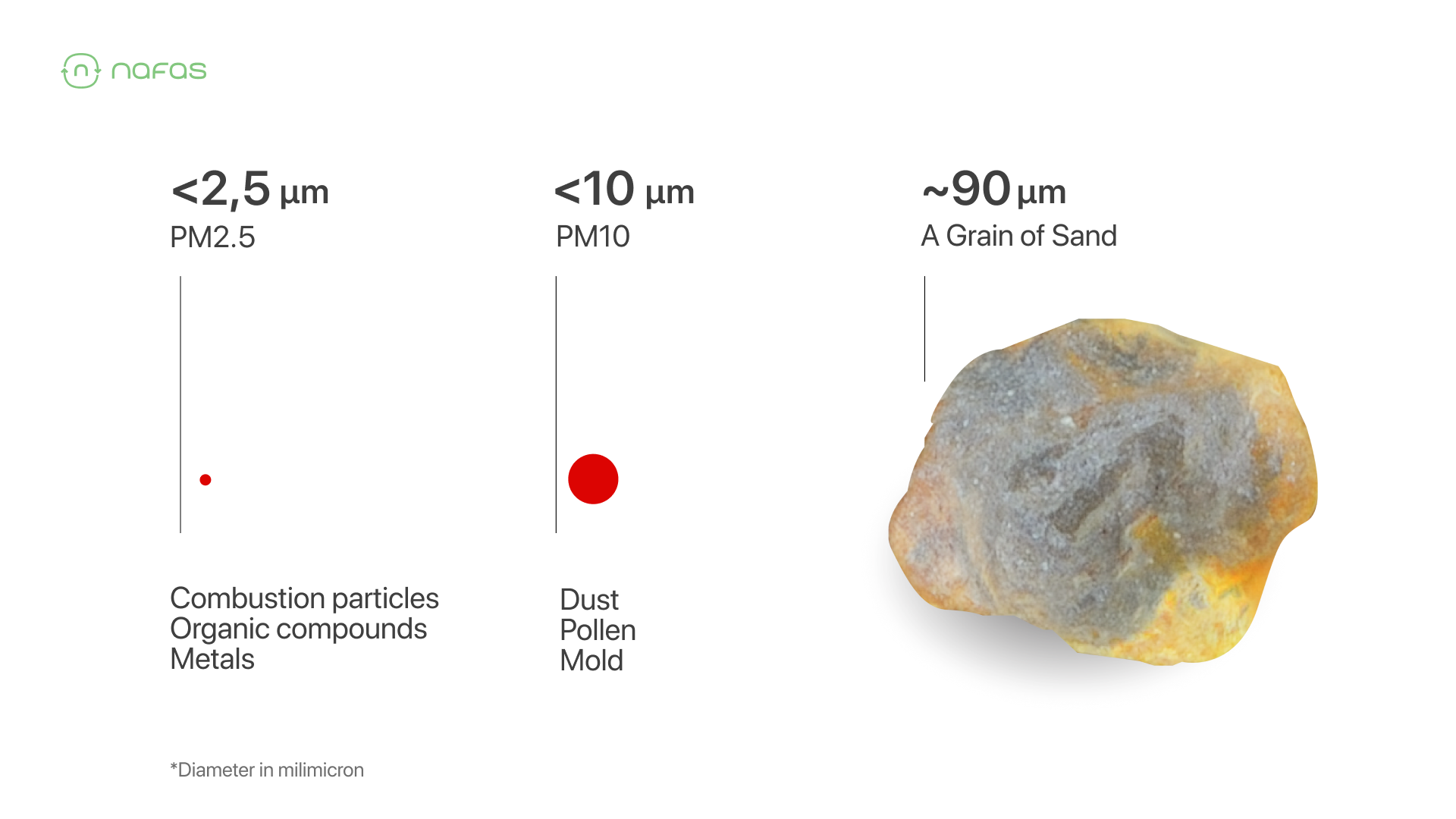
Based on tests conducted by the Nafas team in the field, the level of outdoor air pollution leaking into buildings can reach 100%. This finding is concerning, especially for residents in highly polluted cities like Jakarta.
Nafas previously addressed this issue in an article titled "Our Buildings Make Us Sick," emphasizing the fact that air pollution is not just an outdoor problem but also a serious concern indoors. In cities with high pollution levels like Jakarta, indoor air quality often mirrors the outdoor environment, indicating that outdoor air pollutants can enter buildings and contaminate the air we breathe. This risk applies to various types of buildings, from residential homes and offices to our children's schools.
Impact of Air Pollution on Schools and Children
A study published in the Kosin Medical Journal by researchers from South Korea and Japan delved into the direct effects of PM2.5 on children. The research revealed a significant 9% increase in the risk of asthma attacks in children when PM2.5 concentration rises by 10 μg/m³ from a baseline of 15 μg/m³ on the day before the asthma attack (Lee et al., 2018).
In response to these concerns, Nafas partnered with ISMILE Permata Hijau to improve indoor air quality, aiming to create a healthy learning and working environment for students, teachers, and school staff.
Challenge: Indoor Air Quality at ISMILE Permata Hijau School Often Exceeds Recommended Limits
To assess the extent of outdoor air pollution leakage into the classrooms of ISMILE Permata Hijau, Nafas used air quality monitors connected to a cloud-based system. These devices were tasked with monitoring PM2.5 levels, CO2 concentrations, temperature, and humidity.
Based on the summarized air quality data at ISMILE Permata Hijau in October 2023, the indoor pollution level (represented by the blue line) often exceeded 15 μg/m³, surpassing both the WHO's daily average guideline and the recommended 'Good' air quality threshold in studies.
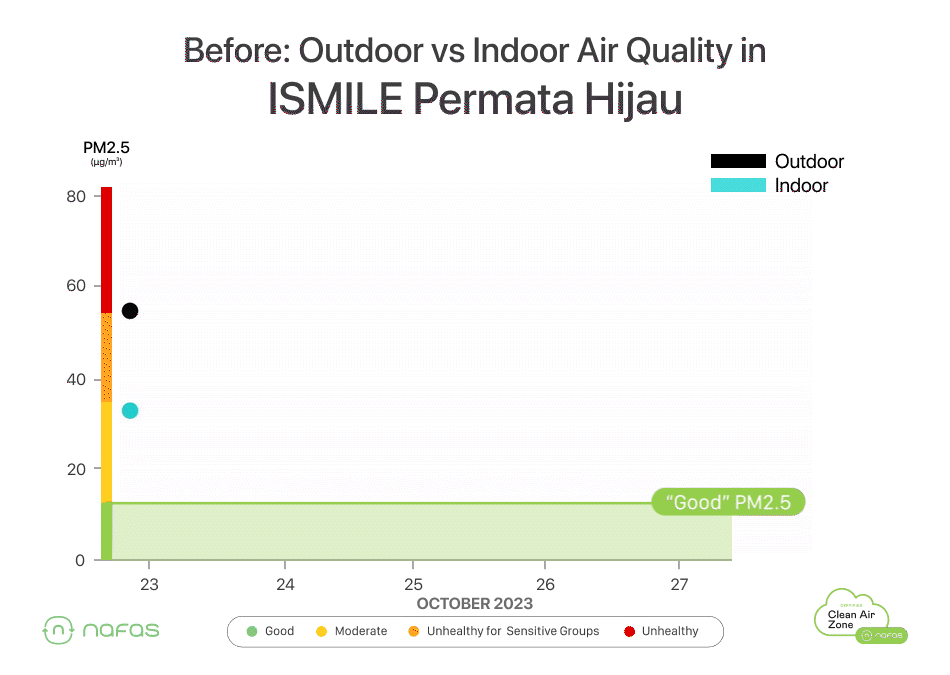
Field tests showed a spike in PM2.5 levels inside the ISMILE Permata Hijau classrooms, reaching almost 60 µg/m³—more than 4 times the recommended maximum limit!
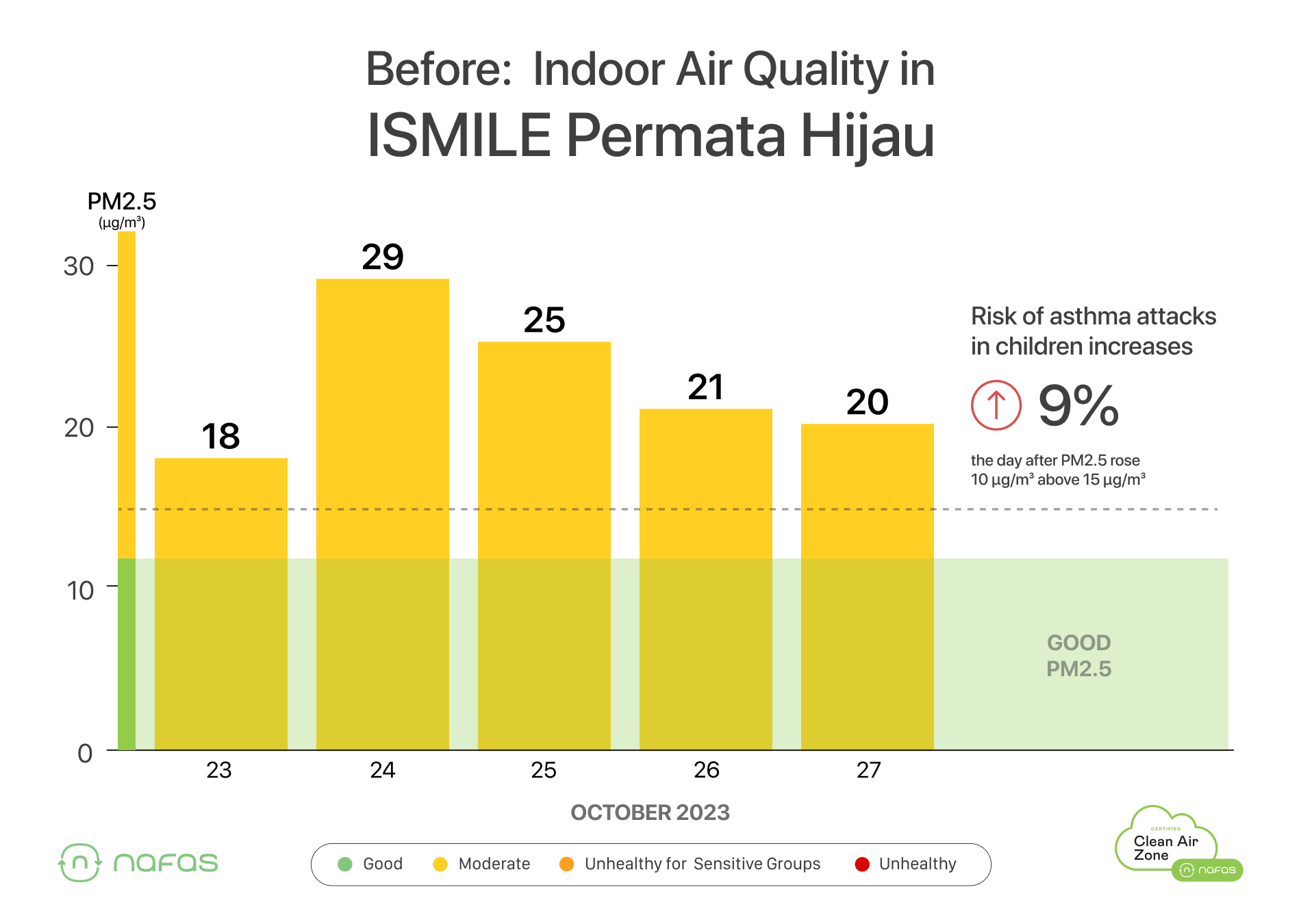
The school's infrastructure lacked the ability to filter pollutants from outside and posed a health risk to everyone inside the classrooms. This situation highlights the urgent need to add air purification systems to schools to create a healthy learning environment for students, teachers, and school staff.
Solution: Transforming ISMILE Permata Hijau into a Clean Air Zone
To address poor indoor air quality in schools in polluted cities like Jakarta, Nafas has developed the Clean Air Zone system. This ecosystem is comprehensively designed to maintain healthy indoor air quality throughout the school's operating hours. This can be achieved through an automated and integrated system that includes accurate air quality measurements, effective air filtration techniques, strong certification standards, and data-driven programs involving stakeholders.
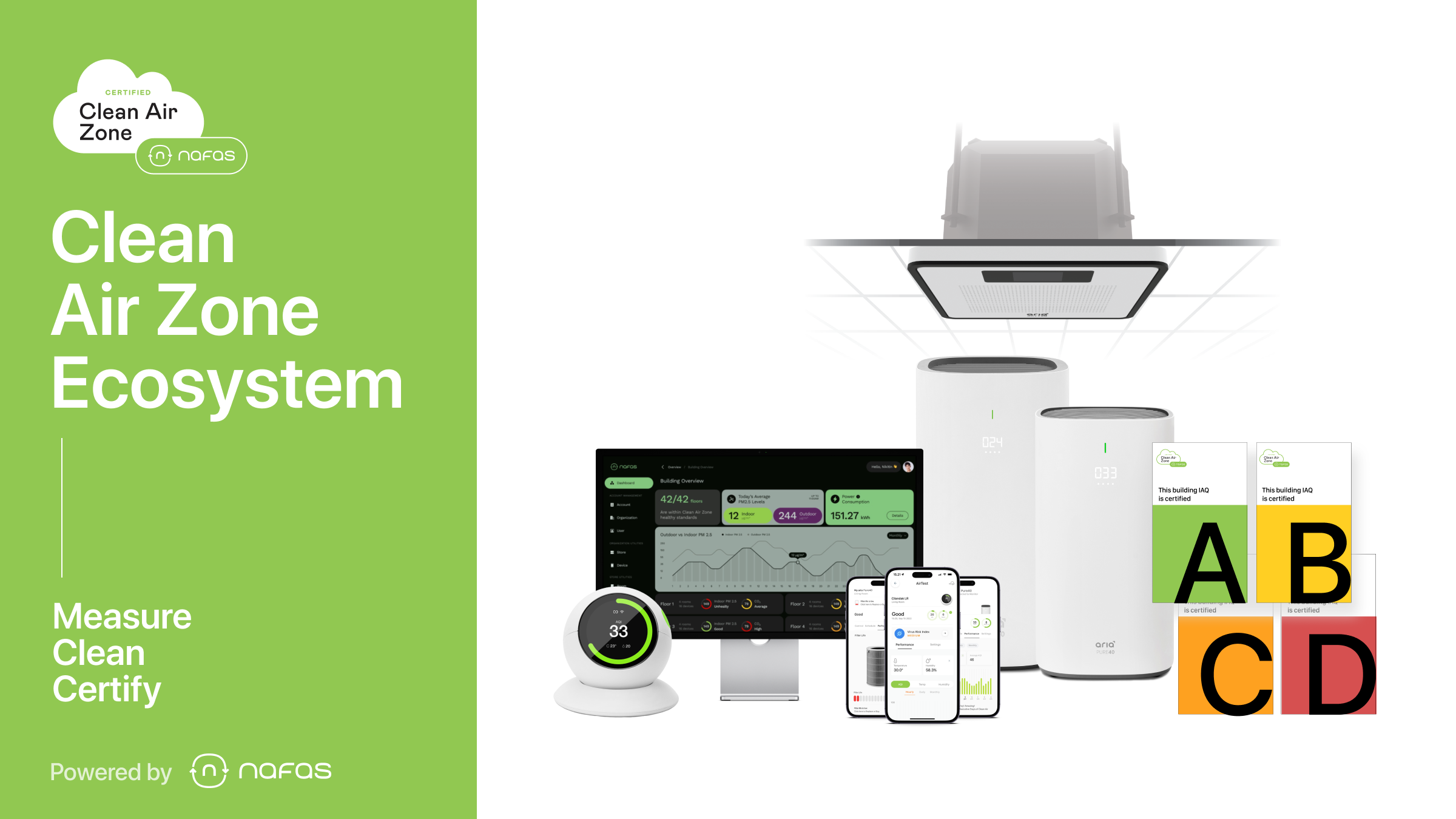
Our services are available through a subscription model with no upfront investment. The Clean Air Zone ecosystem can help improve indoor air quality in schools easily and conveniently.
Results: Significant Improvement in Air Quality at ISMILE Permata Hijau
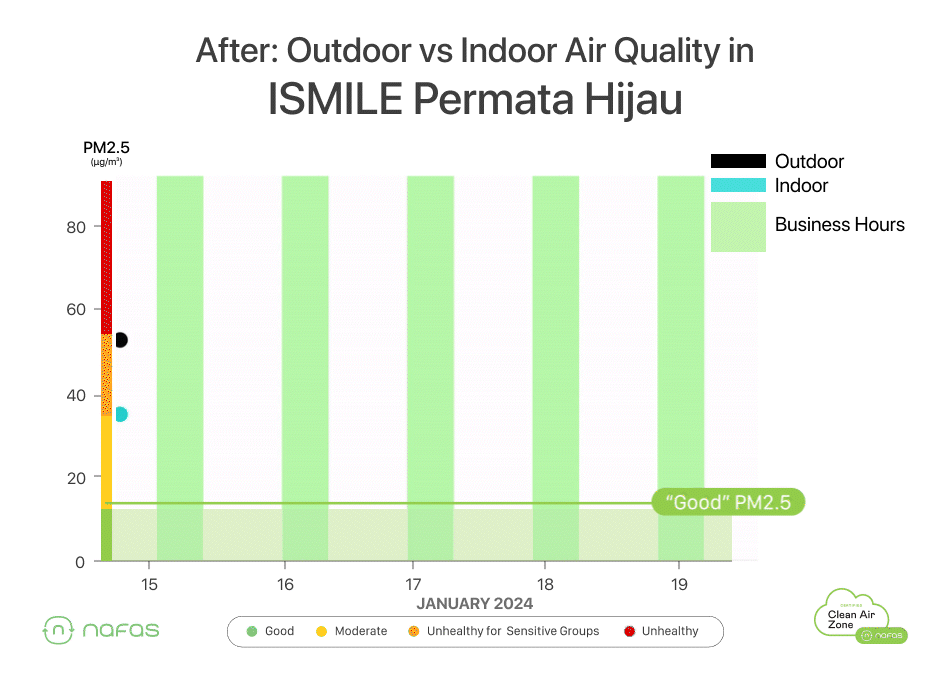
By the end of 2023, ISMILE Permata Hijau officially became a Clean Air Zone. The collaboration between the school and Nafas emphasized the importance of creating a healthy air environment inside school classrooms.
The air quality data collected by the Nafas team during January 2024 indicates a significant difference in indoor air quality before and after ISMILE Permata Hijau became a Clean Air Zone.
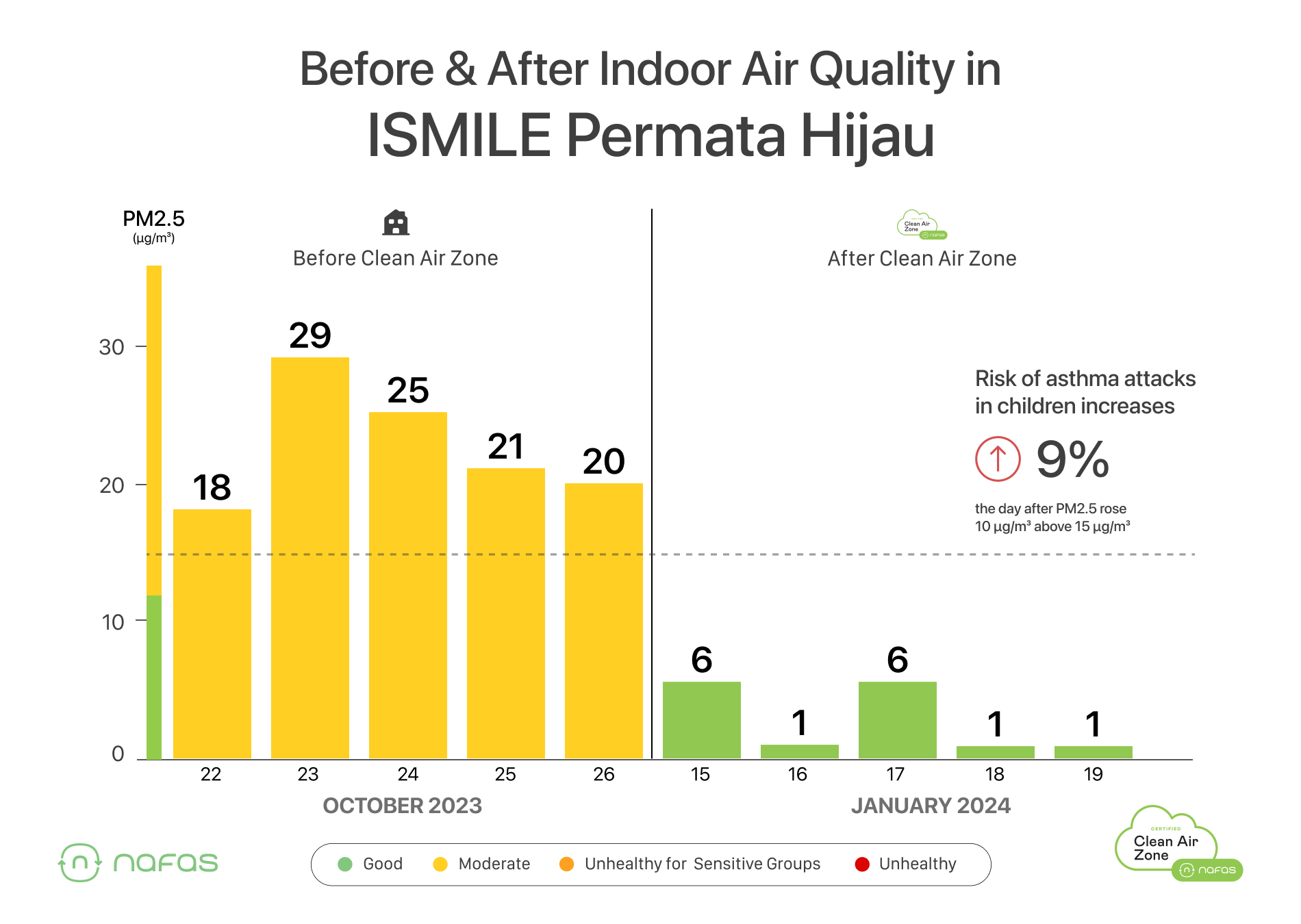
It is evident that the Clean Air Zone ecosystem has successfully maintained healthy indoor air quality throughout school hours.
As a result, the air quality inside ISMILE Permata Hijau has improved by over 90% after becoming a Clean Air Zone. The average air quality at the school since becoming a Clean Air Zone consistently remains high, with PM2.5 levels at 10 µg/m3.
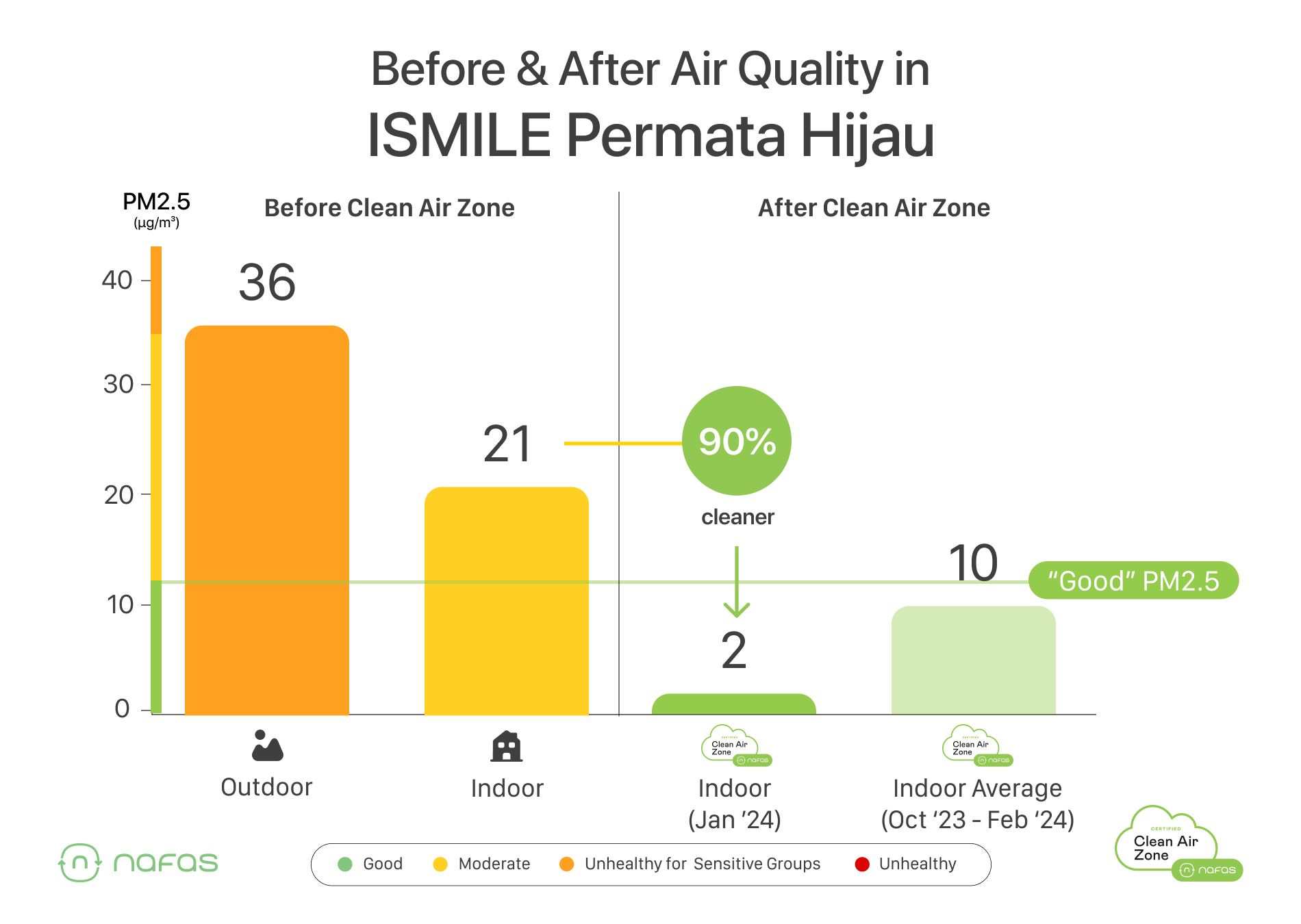
Now, everyone consistently breathes clean and healthy air during school hours, reducing the risk of asthma attacks in children.
Monthly Air Quality Reports
Through the data-driven Clean Air Zone service, ISMILE Permata Hijau will receive monthly reports containing air quality performance during the previous month. The school can share this information with parents, teachers, staff, and stakeholders. Here is an example of the report received by the school every month:

Becoming a Clean Air Zone is So Easy
Interested in making air quality in your school always healthy? Feel free to contact us at [email protected] or click the link below. Let's join our mission to make clean air the standard in our children's schools!
